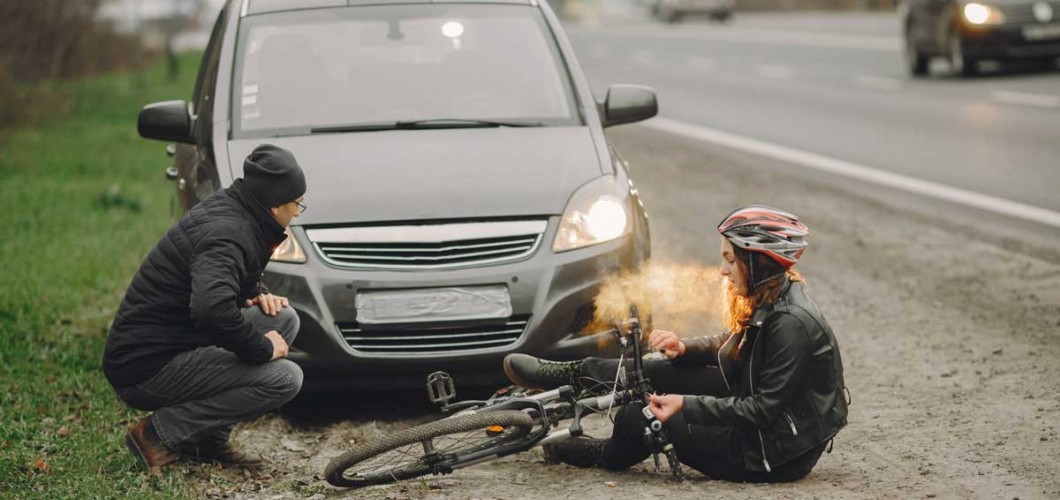
First Aid for Traffic Accidents: How to Provide Assistance
Traffic accidents result in millions of deaths and injuries worldwide every year. These accidents often occur due to factors like speed, distraction, alcohol, or fatigue. However, immediate and proper first aid interventions following a traffic accident can significantly improve a victim's chances of survival and speed up the recovery process.
When witnessing a traffic accident, it’s crucial to respond correctly and efficiently to help the injured. This guide will cover what to do in a traffic accident, essential first aid techniques, and steps to take to improve the condition of the victims until professional help arrives.
1. Ensure Safety and Call for Help
Before beginning any first aid, the first step is to ensure environmental safety. There may still be hazards at the accident scene, so it is essential to protect yourself and others from further danger.
Steps:
- Use proper signaling for traffic safety: Move your vehicle to a safe location and turn on the hazard lights to warn other drivers about the accident scene.
- Call for emergency assistance: Dial the local emergency number (112 in Turkey) and report the situation. Provide details about the condition of the injured (consciousness, serious injuries, etc.).
- Warn other drivers: If the accident is blocking the road, direct other drivers carefully to avoid further accidents.
2. Assess the Victim’s Condition
Before the arrival of emergency responders, evaluating the condition of the victims is crucial. Assessing the situation accurately helps in providing the right first aid treatment.
Steps:
- Examine the victim: Check if the person is conscious or unconscious, whether they are breathing normally, and if there are any signs of bleeding, fractures, or dislocations.
- Do not move the injured person: If the victim has lost consciousness or has suspected spinal or neck injuries, avoid moving them. Movement could worsen their condition.
3. Perform CPR (Cardiopulmonary Resuscitation)
If the victim is not breathing, performing CPR (Cardiopulmonary Resuscitation) is critical for saving their life. CPR is a life-saving technique used to restore circulation and breathing.
Steps:
- Check for consciousness: If you suspect the victim is unconscious, gently try to wake them by calling their name or tapping their shoulder.
- Check for breathing: If the victim is not breathing, immediately begin CPR. For an adult, perform 30 chest compressions followed by 2 rescue breaths.
- Continue until help arrives: If no emergency responders arrive and you must continue CPR, perform 30 chest compressions and 2 rescue breaths in a 30:2 ratio until help comes.
4. Dealing with Bleeding
Heavy bleeding is a common and potentially life-threatening condition in traffic accidents. If left untreated, bleeding can lead to shock or even death.
Steps:
- Identify the source of bleeding: First, identify the area of the body where bleeding is occurring. If large blood vessels or organs are involved, immediate action is required.
- Apply pressure to stop the bleeding: Use a clean cloth or bandage to apply direct pressure to the bleeding area to control the flow of blood.
- Elevate the injured area: If possible, raise the bleeding part of the body above the level of the heart to help reduce bleeding.
- Prepare for shock: If the victim shows signs of shock (cold sweat, dizziness, difficulty breathing), keep them calm and cover them with a blanket to maintain body temperature.
5. Fractures and Dislocations
Bone fractures and joint dislocations are frequent injuries in traffic accidents. Properly handling fractures and dislocations can prevent further harm.
Steps:
- Stabilize fractures: If a fracture is suspected, immobilize the area with a splint or any available material to prevent further movement and minimize pain.
- Handle dislocations carefully: If a dislocation is suspected, do not attempt to move the dislocated joint. Simply immobilize the joint and wait for medical professionals to manage the injury.
6. Calming the Victim and Providing Psychological Support
The psychological impact of a traffic accident is significant. Anxiety, shock, and fear can worsen the condition of the injured person.
Steps:
- Calm the victim: Reassure them with comforting words and encourage them to stay calm. Keep the victim as relaxed as possible and try to alleviate any panic.
- Wait for professional help: Once emergency services arrive, provide them with all relevant information about the victim’s condition. Avoid any further interventions unless instructed by the medical team.
7. Assisting Emergency Responders
When emergency responders arrive, provide them with a clear report about the victim’s condition, including information on consciousness, breathing, bleeding, fractures, and any other critical observations. Follow their instructions to facilitate proper treatment and transportation.
Conclusion
First aid in traffic accidents can significantly improve the chances of survival and speed up the recovery of the injured. However, staying calm, knowing what to do, and calling emergency services as quickly as possible are essential to saving lives. Remember, the right first aid intervention during an accident can make all the difference in someone's life.

Leave a Comment